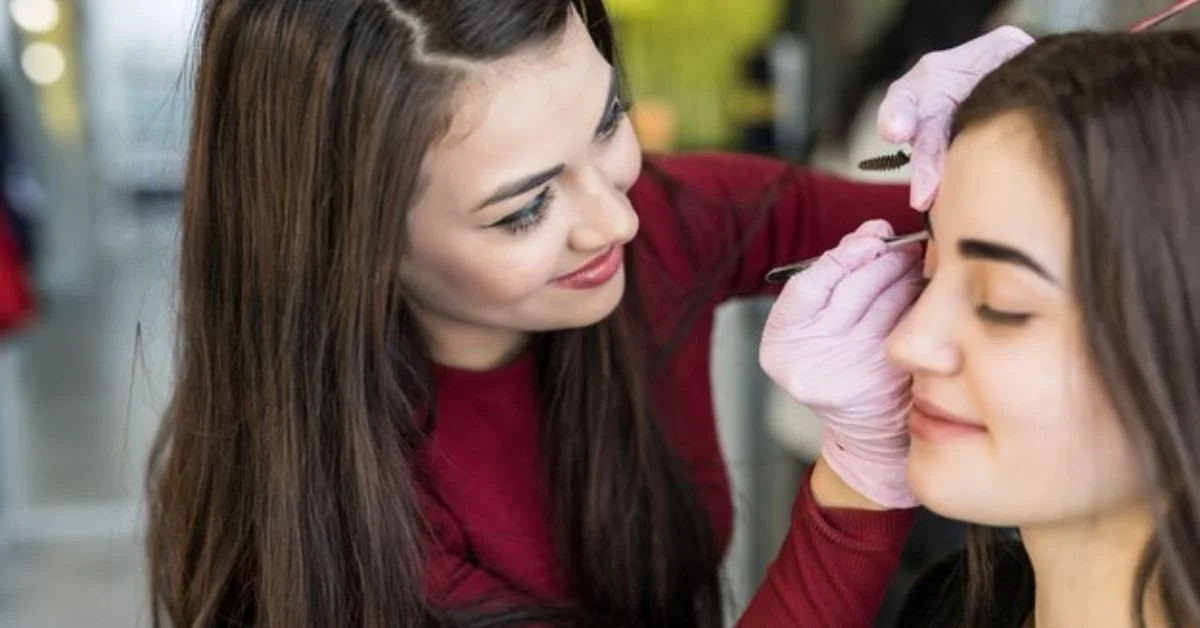Are you tired of filling in your brows every morning or dealing with uneven patches? You’re not alone. Microblading has taken the beauty world by storm, offering a semi-permanent solution to achieve the perfect arches without daily hassle. If you’ve been considering this game-changing treatment but are unsure what to expect, you’re in the right place. We’ll guide you through everything from understanding what microblading is and who can benefit from it, to navigating your first session like a pro. Say goodbye to brow woes and hello to effortlessly stunning eyebrows!
What is Microblading?
Microblading is a semi-permanent cosmetic tattooing technique designed to enhance the appearance of your eyebrows. Unlike traditional tattoos, microblading uses a handheld tool with tiny needles to create fine, hair-like strokes that mimic natural brow hairs. This results in fuller brows that look lush and realistic.
The process involves depositing pigment into the upper layer of skin, allowing for beautifully defined shapes tailored to each individual’s facial features. It’s an art form as much as it is a beauty treatment.
One of the most appealing aspects of microblading is its longevity; results typically last between one to three years before any touch-ups are needed. However, factors such as skin type and aftercare can affect how long your brows stay flawless.
Whether you have sparse eyebrows or simply wish to refine their shape, microblading offers a personalized solution that enhances your natural beauty without looking overdone. It’s become a go-to option for anyone wanting effortlessly perfect brows every day.
READ MORE:Pink Pearls are Classic Ones: Discover Timeless Elegance
Who is a Good Candidate for Microblading?
Microblading is an excellent option for many, but not everyone. Ideal candidates typically have sparse or thinning eyebrows and wish to enhance their shape. Those who want a more defined look without the daily hassle of makeup find microblading particularly appealing.
Individuals with oily skin may experience different results due to excess oil affecting pigment retention. It’s essential to consult with your technician if you fall into this category, as they can offer tailored advice based on your skin type.
People with certain medical conditions should also approach microblading cautiously. If you’re on blood thinners or have autoimmune disorders, it’s crucial to disclose this in your initial consultation.
Pregnant or nursing women are often advised against undergoing the procedure due to potential hormonal fluctuations and sensitivity issues that can affect healing and results. A thorough discussion with a professional will help determine if microblading is right for you.
Understanding the Process
Microblading is an intricate art form that requires precision and skill. During your first session, the technician will start by assessing your natural brow shape and color. They’ll discuss your desired look with you to ensure both parties are on the same page.
Once everything is set, a topical numbing cream is applied to minimize discomfort. After waiting for it to take effect, the artist uses a specialized tool with tiny needles to create hair-like strokes in the skin. This technique mimics natural eyebrow hairs to achieve a fuller appearance.
The process typically lasts between two to three hours. It’s essential during this time that you remain relaxed and communicate openly with your technician about any concerns or preferences.
After completing the microblading, they may apply an ointment and give you detailed aftercare instructions. You’ll leave excited about your new brows while understanding that patience is key as they heal over time.
Microblading Costs and Expectations
Microblading costs can vary significantly based on location, the artist’s experience, and the complexity of your desired look. On average, you might expect to pay between $300 to $800 for a session. This investment includes not only the initial procedure but often a touch-up appointment within 6-8 weeks.
It’s essential to remember that microblading is considered semi-permanent makeup. The results can last anywhere from one to three years, depending on factors like skin type and aftercare habits. Because of this longevity, many find it worth the expense compared to regular trips for brow pencils or powders.
When budgeting for your microblading journey, consider additional costs such as aftercare products and follow-up sessions. Quality work usually comes with a price tag because experienced artists utilize high-quality pigments and tools.
Being clear about what you want before starting will help set realistic expectations. Researching styles and discussing them with your artist ensures you leave with brows you’ll love long-term.
READ MORE:10 Amazing Uses of Agua Oxigenada for Home, Beauty & More
Pain Level and Healing Time
Microblading is often perceived as a daunting procedure, especially when it comes to pain. However, many clients report that the discomfort is minimal. Most artists apply a topical numbing cream prior to starting the microblading process, which significantly reduces any sensation you may experience during the treatment.
The procedure itself typically lasts between one and two hours. You might feel some slight scratching or pinching sensations, but these should be manageable. Each individual’s pain threshold varies, so experiences can differ from person to person.
After your session, it’s common for brows to appear slightly swollen or red—similar to what you’d expect after an eyebrow tinting appointment. This usually subsides within a few hours.
Healing time varies too; generally, initial healing occurs in about 7-14 days. During this period, your brows might flake or scab as they heal naturally. It’s essential to follow post-care instructions for optimal results and longer-lasting beauty.
Preparing for Your Microblading Appointment
Preparing for your microblading appointment is crucial for achieving the best results. Start by researching reputable artists in your area. Look at their portfolios and read reviews to ensure they have a solid track record.
A week before your session, avoid blood thinners like caffeine and alcohol. These can increase bleeding during the procedure, affecting the final outcome. Hydrating your skin in advance will also help; drink plenty of water and use a good moisturizer.
On the day of your appointment, arrive with clean brows—no makeup or skincare products should be applied. This lets your artist work on a fresh canvas without any barriers that could interfere with the process.
Consider bringing some comfort items, such as headphones or a stress ball. While most people report only mild discomfort during microblading, having something familiar can ease any anxiety you might feel leading up to this exciting transformation.
Post-Care Instructions
After your microblading session, proper care is essential for achieving the best results. Start by gently cleaning your brows with a mild soap and water mixture. Pat them dry softly with a clean towel to avoid irritation.
Avoid getting your brows wet for at least 7 days post-treatment. This means no swimming or steaming in saunas, as excess moisture can affect the healing process and pigment retention.
Moisturizing is key during this time; however, steer clear of any heavy creams or oils directly on the brow area. Instead, use an aftercare ointment recommended by your technician to keep the skin hydrated without overwhelming it.
Resist the urge to pick at scabs or flakes that may form as your eyebrows heal. Allowing them to fall off naturally ensures that you maintain those crisp lines created during microblading.
Finding the Right Expert
Choosing the right expert for your microblading journey is crucial. Start by doing some research. Look online for local artists, read reviews, and check their portfolios. A skilled technician should have before-and-after photos that showcase their work.
Next, consider scheduling consultations with a few different professionals. This gives you an opportunity to ask questions and get a feel for their approach. Pay attention to how they communicate and whether they make you feel comfortable.
It’s also essential to verify their certifications and training. Ensure they are licensed in your state and have completed accredited courses in microblading techniques. A well-trained artist will prioritize safety and hygiene during the process.
Trust your instincts when making this decision. Your comfort level matters immensely; it’s about finding someone whose style aligns with your vision while ensuring that you’re in capable hands throughout the entire experience.
READ MORE:Best Disposable Vapes: Top Picks for Flavor & Performance
Final Thoughts
Microblading is a game-changer for those looking to enhance their brows and simplify their beauty routine. If you’ve been curious about the process, it’s essential to approach it with an open mind and realistic expectations. Remember that every experience is unique; your results will depend on various factors, including skin type, aftercare, and the skill of your technician.
Preparing properly can help you achieve the best possible outcome. Take time to research experts in your area and don’t hesitate to ask questions during consultations. Being informed empowers you as a client.
Aftercare plays a crucial role in preserving the quality of your microblading results. Be diligent about following post-care instructions to ensure longevity while allowing your new brows time to heal gracefully.
Whether you’re seeking perfectly shaped arches or simply wanting fuller brows without makeup hassle, microblading could be just what you’re looking for. Embrace this beauty trend confidently as you embark on this exciting journey toward fabulous brows!









